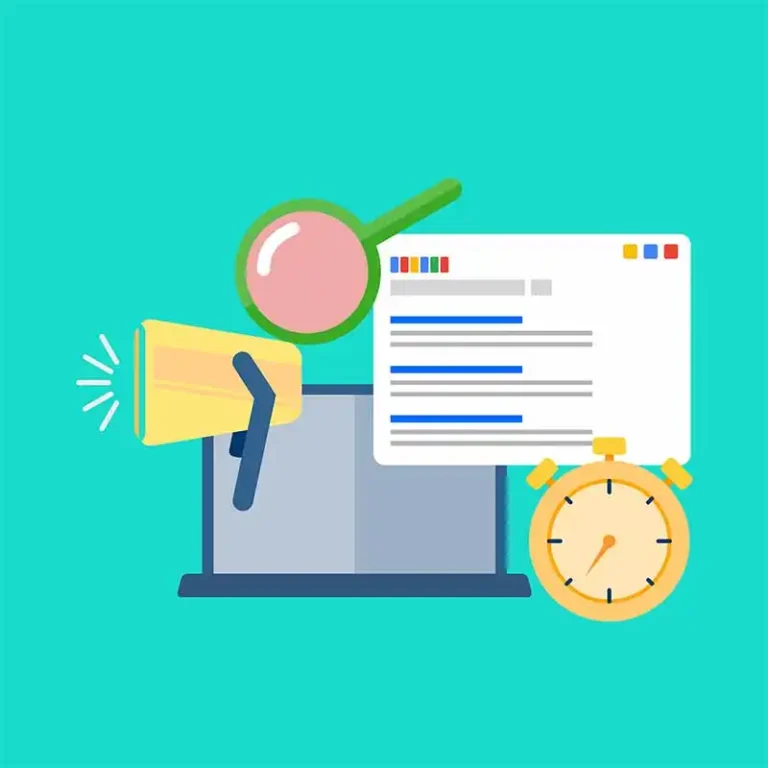Why Google Ads are Important?
In today’s fast-paced digital world, standing out from the competition is more challenging than ever.
That’s where Google Ads comes in—a powerful advertising platform designed to connect businesses with their target audience at the right time and place.
Whether you’re a small business owner or part of a large enterprise, Google Ads offers the tools you need to effectively promote your products or services, ensuring your brand remains visible in the crowded online marketplace.
One of the key reasons Google Ads is essential for business growth is its ability to deliver highly targeted ads to potential customers who are actively searching for what you offer.
Unlike traditional advertising, where messages are broadcast to a broad and often uninterested audience, Google Ads ensures your budget is spent on people with real intent to engage, inquire, or buy.
This makes it one of the most efficient ways to drive traffic, generate leads, and boost sales.
Still not convinced? Here’s a statistic that speaks for itself: Businesses make an average of $8 in revenue for every $1 spent on Google Ads.
This impressive return on investment is why so many brands, both big and small, are leveraging Google Ads to fuel their growth.
With billions of searches happening on Google every day, the platform provides unmatched opportunities to reach your ideal customers.
If you’ve been wondering how to grow your business online or struggling to attract the right audience, now is the time to explore Google Ads.
By the end of this guide, you’ll understand not only why Google Ads is important but also how to use it effectively to achieve your business goals. Let’s dive in!
What Are Google Ads?
Google Ads is a leading online advertising platform developed by Google that allows businesses to promote their products or services to a highly targeted audience.
Launched in 2000, it has since become one of the most effective tools for digital marketing, helping businesses of all sizes connect with potential customers through precise ad placements.
At its core, Google Ads operates on a pay-per-click (PPC) model, meaning you only pay when someone clicks on your ad.
This ensures that your advertising budget is focused on engaging users who are genuinely interested in what you have to offer.
These ads appear prominently in Google Search results, on websites that are part of Google’s vast display network, on YouTube, and even within mobile apps, giving your business unparalleled reach.
How Does Google Ads Work?
When a user types a query into Google’s search engine, the platform uses an auction system to determine which ads to show based on relevance, bid amount, and the quality of the ad.
For example, if someone searches for “best coffee shop near me,” Google Ads will display ads for local coffee shops at the top of the search results page.
These placements are marked as “Sponsored,” making them highly visible to users.
The targeting options within Google Ads are incredibly versatile. Businesses can narrow down their audience based on location, demographics, interests, and even online behaviors.
This ensures that your ads reach the right people at the right time, increasing the likelihood of driving clicks and conversions.
Key Features of Google Ads
Google Ads offers several ad types to suit different marketing goals.
Here’s a quick overview of its primary features:
Search Ads
These are text-based ads that appear at the top or bottom of Google’s search results pages.
They are ideal for businesses looking to capture users actively searching for specific keywords related to their offerings.
Display Ads
These visual ads appear on websites within Google’s Display Network, which includes millions of partner sites.
They’re perfect for increasing brand awareness and reaching users who may not be actively searching but are likely to be interested in your products or services.
Video Ads
Video ads are shown on YouTube and other video partner sites. These ads are highly engaging and work well for storytelling, product demonstrations, or building emotional connections with your audience.
App Ads
Designed to promote mobile apps, these ads appear on Google Search, the Play Store, YouTube, and in other apps.
They’re a great way to drive downloads and increase app engagement.
By leveraging the full suite of Google Ads features, businesses can create a tailored marketing strategy that fits their specific goals, whether it’s generating leads, boosting online sales, or driving in-store traffic.
With the right approach, Google Ads can be a game-changer in achieving measurable success for your business.
Why Google Ads Are Important for Businesses
Google Ads has become an essential tool for businesses aiming to thrive in today’s competitive digital landscape.
It offers unmatched precision, flexibility, and efficiency in reaching the right audience at the right time.
Let’s dive deeper into why Google Ads is crucial for business growth by exploring its key benefits.
High Intent Targeting
One of the standout features of Google Ads is its ability to connect businesses with customers who are actively searching for their products or services.
By leveraging high-intent keywords, businesses can ensure their ads appear in front of users who are ready to engage or make a purchase.
For instance, if someone searches for “best coffee shops near me,” Google Ads will display relevant ads for local coffee shops right at the top of the search results.
This level of intent-based targeting allows businesses to capture high-quality leads and maximize the chances of conversion.
Unlike other advertising methods that interrupt a user’s experience, Google Ads aligns with the user’s intent, making the interaction seamless and valuable.
Immediate Visibility
Appearing on the first page of search results can take months, even years, through organic efforts alone.
Google Ads bridges this gap by providing businesses with immediate visibility, placing their ads at the top of search results almost instantly.
This is particularly beneficial for new businesses competing with established brands.
Instead of waiting for SEO to build momentum, Google Ads ensures that your business gets noticed from the get-go.
For instance, a new bakery can instantly show up when users search for “freshly baked bread near me,” standing alongside long-standing competitors in the local area.
Cost-Effective Marketing
One of the reasons Google Ads is so widely used is its pay-per-click (PPC) model.
Businesses only pay when a user clicks on their ad, ensuring that every dollar spent is directed toward potential customers.
Moreover, Google Ads allows for complete budget control, enabling businesses to set daily limits and adjust spending as needed.
Another significant advantage is the ability to measure return on investment (ROI) in real time.
By tracking metrics like cost-per-click (CPC) and conversion rates, businesses can fine-tune their campaigns for maximum effectiveness, ensuring they get the most out of every dollar spent.
Scalability and Flexibility
Google Ads is highly scalable, making it suitable for businesses of all sizes.
Whether you’re a small local store or a global e-commerce brand, you can scale your campaigns up or down based on your performance and budget.
Its flexibility lies in its ability to target audiences based on a range of parameters, including location, age, gender, interests, and even the devices they use.
For example, a fitness studio can run targeted ads for “yoga classes” exclusively to women aged 25–40 within a 10-mile radius.
This granular targeting ensures that your ads are seen by the most relevant audience.
Measurable Results
Unlike traditional advertising methods, where it’s difficult to measure success, Google Ads provides detailed performance insights through robust tracking tools.
Metrics like impressions, clicks, conversions, and cost-per-acquisition (CPA) give businesses a clear understanding of how their campaigns are performing.
For example, a clothing store can track how many users clicked on their ad for “summer dresses” and how many of those clicks led to purchases.
This data-driven approach allows businesses to make informed decisions, optimize their strategies, and improve campaign outcomes.
Competitive Advantage
In a competitive market, staying ahead of rivals is crucial. Google Ads gives businesses the ability to outshine competitors by strategically placing their ads where they matter most.
For industries heavily reliant on online visibility, such as e-commerce, real estate, or hospitality, Google Ads can be a game-changer.
For instance, an online electronics retailer can use Google Ads to rank higher than competitors for searches like “best gaming laptops.”
By appearing prominently in search results, businesses can capture attention and drive traffic away from competitors, securing a larger share of the market.
Google Ads is more than just an advertising tool—it’s a dynamic platform that empowers businesses to achieve their marketing goals efficiently and effectively.
Whether it’s targeting high-intent customers, gaining immediate visibility, or leveraging measurable data, the benefits of Google Ads make it an indispensable part of any modern marketing strategy.
By investing in Google Ads, businesses can unlock new opportunities for growth and success.
How to Get Started with Google Ads
Google Ads can seem intimidating at first, but with a clear process, even beginners can create effective campaigns that drive results.
Below is a step-by-step guide to help you set up and run successful Google Ads campaigns, along with practical tips to optimize your efforts.
Setting Up a Google Ads Account
The first step to using Google Ads is creating an account:
- Visit the Google Ads website and click on “Start Now.”
- Use an existing Google account or create a new one.
- Set your account preferences, such as your billing country, time zone, and preferred currency. These settings are critical as they influence your campaign’s performance and billing.
Once your account is ready, you’ll be prompted to create your first campaign, but before jumping in, take a moment to define your goals and budget.
Choosing the Right Campaign Type
Google Ads offers several campaign types tailored to different marketing objectives:
- Search Campaigns: Ideal for capturing users actively searching for your product or service.
- Display Campaigns: Perfect for increasing brand awareness through visual ads on Google’s partner sites.
- Shopping Campaigns: Best for e-commerce businesses showcasing product ads directly in search results.
- Video Campaigns: Excellent for storytelling through YouTube ads.
- App Campaigns: Designed to drive app installs and engagement.
Choose a campaign type that aligns with your business goals. For example, if you run an online store, a Shopping Campaign might be the most effective.
Researching and Selecting Effective Keywords
Keywords are the backbone of a successful Google Ads campaign.
Use tools like Google Keyword Planner to identify keywords that your target audience is searching for.
Here’s how to approach keyword selection:
- Focus on high-intent keywords relevant to your business. For example, if you own a bakery, target terms like “order fresh cakes online” or “best bakery near me.”
- Avoid overly broad terms that might waste your budget. For instance, targeting just “cakes” could bring in irrelevant traffic.
- Use negative keywords to filter out searches that don’t match your offerings. For example, exclude “free cakes” if you don’t offer free products.
Writing Compelling Ad Copy
Your ad copy should grab attention and persuade users to take action.
Keep these tips in mind:
- Headline: Include your primary keyword and a clear benefit. For example, “Order Fresh Cakes Online – Delivered Today!”
- Description: Highlight unique selling points, such as free delivery or exclusive offers. Make sure it complements your headline.
- Call-to-Action (CTA): Encourage users to act, such as “Shop Now,” “Book Today,” or “Get a Free Quote.”
Compelling ad copy not only improves click-through rates but also enhances the overall quality of your ad, potentially lowering costs.
Monitoring and Optimizing Campaigns
Launching your campaign is just the beginning. Continuous monitoring and optimization are essential for sustained success:
- Analyze Metrics: Regularly check key performance indicators (KPIs) like impressions, clicks, conversion rates, and cost-per-click (CPC).
- Adjust Bids: Increase bids for high-performing keywords and reduce spending on underperforming ones.
- Refine Targeting: Fine-tune audience demographics, locations, and devices to better align with your ideal customer.
- A/B Testing: Experiment with different headlines, descriptions, CTAs, or landing pages to identify what resonates best with your audience.
Pro Tips for Running Successful Google Ads Campaigns
- Start Small: Begin with a modest budget to test and learn what works before scaling up.
- Use Ad Extensions: Enhance your ads with additional information like phone numbers, links to specific pages, or customer reviews.
- Leverage Automation: Use Google’s automated bidding strategies to save time and optimize performance.
- Focus on Landing Pages: Ensure your landing pages are optimized for user experience and aligned with your ad’s message.
- Stay Updated: Regularly review your campaigns and adapt to changing trends or competitor strategies.
Getting started with Google Ads requires some initial effort, but the platform’s versatility and potential ROI make it a worthwhile investment.
By following these steps and continually refining your strategy, you’ll be well on your way to running successful campaigns that drive meaningful results for your business.
Common Misconceptions About Google Ads
When it comes to digital advertising, Google Ads is one of the most powerful tools available. However, many businesses hesitate to use it due to common misconceptions.
Let’s address these myths with factual explanations to clarify why Google Ads can be a game-changer for businesses of all sizes.
Myth 1: “Google Ads is Too Expensive”
One of the most widespread beliefs is that Google Ads costs a fortune and is only suitable for large corporations with big budgets.
Google Ads operates on a pay-per-click (PPC) model, meaning you only pay when someone clicks on your ad.
Additionally, you have complete control over your daily and monthly budget, ensuring you don’t spend more than you can afford.
For instance, a small local bakery could set a daily budget of $10 and target keywords like “fresh pastries near me.”
This precise targeting ensures every dollar is spent on reaching people actively searching for their offerings.
The key is to start small, monitor performance, and scale up as you see results.
Myth 2: “Google Ads Doesn’t Work for Small Businesses”
Many believe that Google Ads favors large companies with established brand recognition, leaving small businesses struggling to compete.
Google Ads is designed to level the playing field. Small businesses can target local customers, narrow down their audience by demographics, and focus on high-intent keywords to attract people ready to make a purchase.
For example, a neighborhood gym can run ads targeting people in a 5-mile radius searching for “best fitness classes nearby.”
With features like location-based targeting, small businesses can connect directly with their ideal audience without wasting their budget.
Myth 3: “SEO is Better Than Google Ads”
Some businesses think they should prioritize search engine optimization (SEO) over Google Ads because it’s “free” traffic.
While SEO is an essential part of a long-term marketing strategy, it takes time to see results.
Google Ads, on the other hand, offers immediate visibility at the top of search results, helping businesses gain traffic and leads right away.
SEO and Google Ads work best together. For example, you can run Google Ads to generate instant leads while building your organic rankings through SEO over time.
Myth 4: “People Don’t Click on Google Ads”
Another misconception is that users skip ads and focus solely on organic search results.
While some users may scroll past ads, many rely on them to find solutions quickly.
Google Ads often provide direct answers to user queries, making them highly relevant and useful.
Moreover, research shows that ads at the top of the page are more likely to be clicked, especially for transactional searches like “buy outdoor furniture online.”
The trick is to create ads that are engaging, relevant, and aligned with user intent.
Myth 5: “It’s Hard to Measure Results”
Some businesses assume that Google Ads is complicated and that measuring its success is nearly impossible.
Google Ads provides robust tracking and analytics tools that offer detailed insights into campaign performance.
Metrics like clicks, impressions, conversion rates, and cost-per-acquisition (CPA) make it easy to evaluate ROI and adjust strategies for better outcomes.
For instance, a clothing store can track how many users clicked on an ad, visited their site, and purchased a product.
This data helps businesses make informed decisions and continuously improve their campaigns.
Believing these myths can hold businesses back from unlocking the full potential of Google Ads.
Whether you’re a small business owner, an entrepreneur, or part of a growing enterprise, Google Ads provides tools to reach your audience efficiently and affordably.
By understanding the facts, you can approach your advertising efforts with confidence and maximize the returns on your investment.
It’s time to put these misconceptions to rest and explore how Google Ads can help your business thrive in a competitive digital landscape.
Frequently Asked Questions about Why Google Ads are Important
How much does it cost to run Google Ads?
The cost of running Google Ads is flexible and depends entirely on your budget and goals.
With the pay-per-click (PPC) model, you only pay when someone clicks on your ad.
Additionally, you can set a daily budget that aligns with your financial capacity, making it accessible for businesses of all sizes.
Whether you want to spend $10 or $1,000 a day, Google Ads provides the tools to control your spending while delivering results.
Can small businesses benefit from Google Ads?
Absolutely! Google Ads is incredibly beneficial for small businesses because it allows you to target your ideal customers precisely.
With features like location-based targeting, demographic filters, and keyword optimization, small businesses can reach local or niche audiences effectively.
For example, a neighborhood café can attract people searching for “best coffee shops near me,” driving foot traffic and boosting sales without needing a massive advertising budget.
How do I track the success of my Google Ads campaigns?
Google Ads comes with robust analytics tools that provide clear insights into how your campaigns are performing.
You can monitor key metrics like click-through rate (CTR), cost-per-click (CPC), and conversions.
These metrics help you understand which ads are driving traffic, generating leads, or resulting in sales.
Additionally, conversion tracking lets you see actions users take on your website, such as filling out a contact form or completing a purchase, ensuring that you can measure and optimize your return on investment (ROI) effectively.







